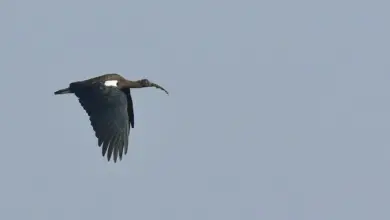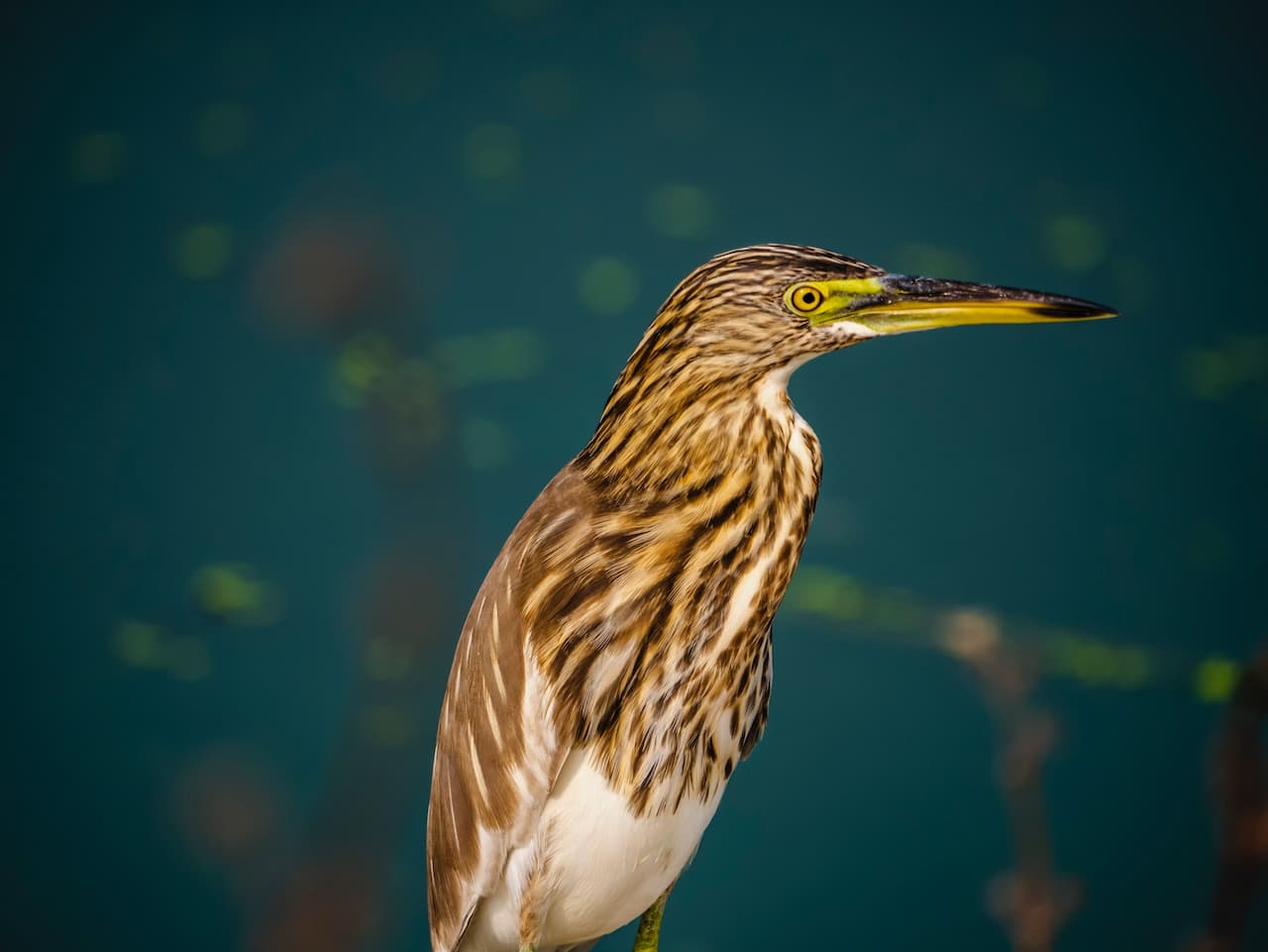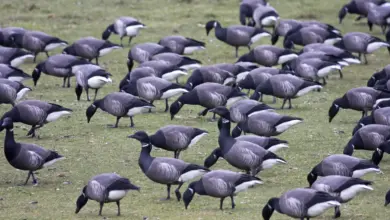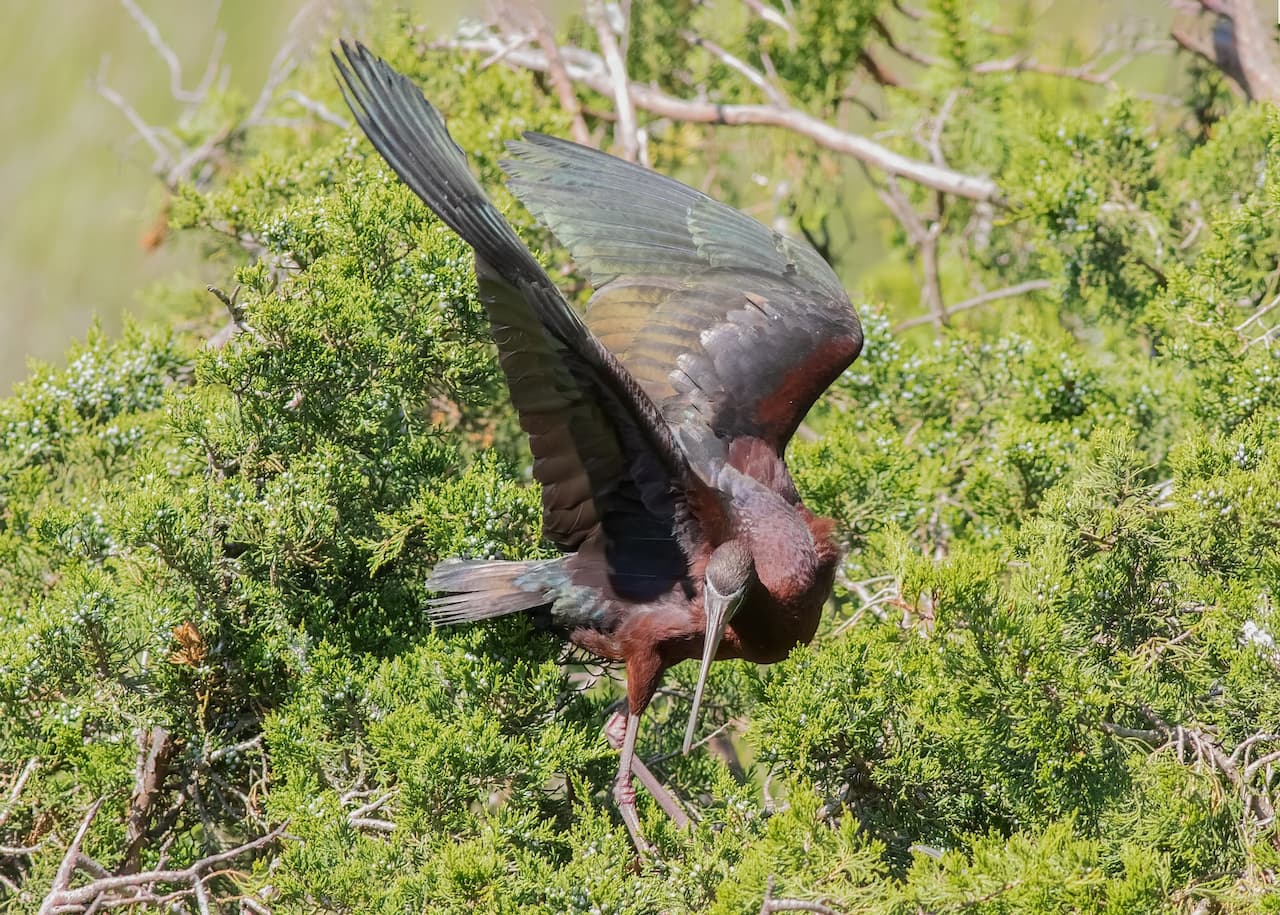Ring-necked Duck
The Ring-necked Duck (Aythya collaris) is a smaller diving duck.
Description
The Ring-necked Duck adult male has a grey bill with a white band, a shiny purple head, a white breast, yellow eyes and a dark grey back. The adult female has a pale brown head and body with a dark brown back, a dark bill with a more subtle light band than the male and brown eyes. The cinnamon neck ring is usually difficult to observe.
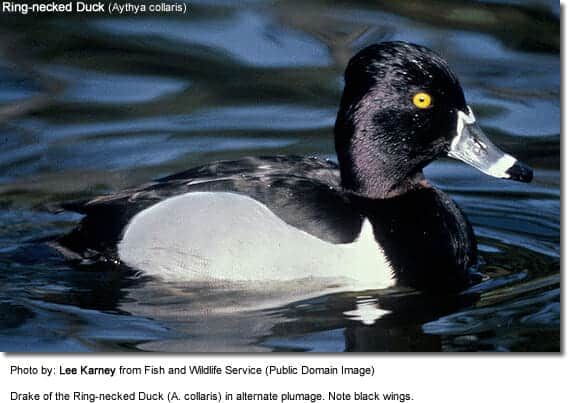
Distribution / Habitat
Their breeding habitat is wooded lakes or ponds in the northern United States and Canada. The nest is bowl-shaped, built with aquatic vegetation and lined with down, in a dry location near open water. The female lays 8 to 10 eggs and may remain with the young until they are able to fly.

They overwinter in the southern United States usually in lakes, ponds, rivers or bays.
This strong migrant is a rare but regular vagrant to western Europe.
More Duck Resources
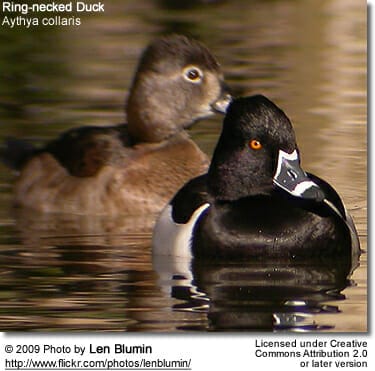
Diet / Feeding:
Ring-necked Ducks feed mainly by diving for aquatic plants as well as some mollusks, aquatic insects and small fish.
Ducks generally feed on larvae and pupae usually found under rocks, aquatic animals, plant material, seeds, small fish, snails and crabs.
Feeding Ducks …
We all enjoy ducks and many of us offer them food to encourage them to come over and stay around – and it works! Who doesn’t like an easy meal!
However, the foods that we traditionally feed them at local ponds are utterly unsuitable for them and are likely to cause health problems down the road. Also, there may be local laws against feeding this species of bird – so it’s best to check on that rather than facing consequences at a later stage.
- Foods that can be fed to Ducks, Geese and Swans to survive cold winters and remain healthy when food is scarce in their environment.
Please note that feeding ducks and geese makes them dependent on humans for food, which can result in starvation and possibly death when those feedings stop. If you decide to feed them, please limit the quantity to make sure that they maintain their natural ability to forage for food themselves – providing, of course, that natural food sources are available.

